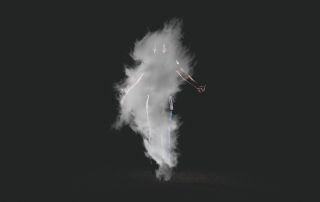Near-Death Experiences
New APA Book: Death as an Altered State of Consciousness
Personal Perspective: Reviewing a new book that examines life after death.
Posted September 19, 2023 Reviewed by Ray Parker
Key points
- Anomalous experiences can teach us a lot about the nature of consciousness.
- Traditional academic theories rooted in materialism have failed to explain death-related anomalous phenomena.
- Examining death-related anomalous phenomena suggests that consciousness exists after physical death.

You are going to die.
Hopefully, you don’t feel personally victimized by this realization, as everybody dies. While the awareness of death can evoke a wide range of responses and experiences within us, it is a natural part of life. Physical death is inevitable, although most of us don’t know how or when death will occur.
Far more debatable, however, is the question: "Does consciousness survive after physical death?" Imants Barušs, a renowned consciousness scientist and researcher, has recently published, Death As An Altered State of Consciousness, with the American Psychological Association, which tackles this evocative question.
The book is a welcome addition to the fields of psychology, thanatology (death studies), and religious or consciousness studies, as Barušs explicitly analyzes death-related anomalous phenomena. Anomalous phenomena can be broadly defined as experiences, sensations, or events that do not neatly fit into the prevailing scientific culture of our time and our "everyday" life experiences.
Isn’t death supposed to be the obliteration of consciousness?
Most societies, cultures, religions, spiritual traditions, and philosophical ideologies across the world have vastly different perspectives on this raw existential issue. Most of us are familiar with concepts like eternal life or reincarnation, as well as the idea that biological death might be the annihilation of all consciousness. Barušs outlines how the notion that consciousness comes to a complete end after physical death is also a philosophical idea, rooted in materialism.
Materialism, broadly speaking, is the notion that everything can be reduced to material processes (i.e., people or consciousness are just the activity of indivisible atoms). At this moment, many academic cultures are deeply rooted in materialistic beliefs about science, and there is an ongoing lack of research that is willing to challenge these assumptions.
However, there is a difference between materialism and science.
Barušs advocates how science ought to prioritize open investigation, and scientific inquiry encourages revisiting the evidence of things we thought we knew. Science is more about rigorously testing our ideas and consistently evolving our collective knowledge based on the evidence, which includes things like mystical or extraordinary experiences, as these experiences happen.
Instead of superficially describing these experiences as “woo-woo” and turning a blind eye, Barušs is committed to examining anomalous experiences that occur around dying or death through the lens of genuine curiosity. Science only advances by continuing to stay curious and open to unexplained experiences. These provide rich opportunities for a deeper understanding of the nature of consciousness and the world we live in.
For those interested, the book Transcendent Mind that Barušs co-authored with Julia Mossbridge, also published by the APA, goes into extensive counterarguments regarding how traditional materialistic theories have difficulty explaining, well, a lot.
An open investigation of death-related anomalous phenomena
Death As An Altered State of Consciousness investigates scientific data relating to after-death communications, deathbed phenomena, mediumship, instrumental "transcommunication," anomalous experiences, near-death experiences, and past-life experiences, amongst other death-related experiences. These mysterious experiences occur cross-culturally, and more frequently than most of us realize, as our death-avoidant culture often doesn’t like to openly discuss death, let alone mediumship experiences over the dinner table.

Interestingly, the book also demonstrates how we can even experience anomalous phenomena with animals, like Oscar the cat. Oscar has a proven track record of predicting a person’s death at Steere House Nursing and Rehabilitation Center in Rhode Island.
Overall, this book does prioritize human experiences of such phenomena, exploring topics such as how relationships continue even after a person dies, or how near-death experiencers have conscious awareness of their environments, despite having no heart or brain activity.
Barušs weaves together extensive scientific research and interdisciplinary scholarship, ultimately suggesting that death is an altered state of consciousness. The author does a tremendous job engaging with death-related anomalous phenomena critically and transparently, exploring important questions with an open scientific approach.
Nevertheless, readers should engage with this book with a critically reflective eye, as some evidence in the book is stronger than other evidence for the possibility of the survival of consciousness after physical death.
The book is a must-read for scientists, psychology nerds, postsecondary students, consciousness explorers, healthcare workers, self-actualization enthusiasts, and for those of us who are simply more existentially inclined to wonder: What happens when we die?
References
1. Barušs, I. (2023). Death as an altered state of consciousness: A scientific approach. American Psychological Association.
2. Barušs, I., & Mossbridge, J. (2017). Transcendent mind: Rethinking the science of consciousness. American Psychological Association.




